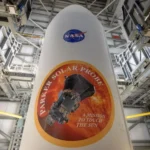Understanding Radiative Decay Rate Enhancement in Dielectric Gap Nanoantennas
In today’s ever-evolving world, delving into the intricacies of manipulating light at the nanoscale has become increasingly vital. A recent publication in Light: Science & Applications divulged a groundbreaking advancement in this realm. The study, conducted by a team of scientists from the Institut Langevin, ESPCI Paris, PSL University, CNRS, has shed light on a paramount leap forward.
Introducing Dielectric Gap Nanoantennas
The heart of this pioneering research lies in dielectric gap nanoantennas, meticulously crafted at the Imperial College london. Comprised of gallium phosphide (GaP), these structures were specifically selected for their exceptional refractive index and minimal optical losses, enhancing light interaction at the nanoscale. Through a collaborative effort, the scientists have unveiled a novel method to gauge this enhanced light interaction, utilizing single molecules as probes.
Unlocking the Power of Single Molecules
The research employs an innovative approach that taps into the exceptional light interaction prompted solely by the nanoantennas, eschewing the need for near-field probes to modify the nanosystem. This methodology has resulted in a significant 30-fold enhancement in radiative decay rates at the single molecule level. This monumental accomplishment provides crucial insights into light-matter interactions, transcending theoretical exploration to offer practical implications.
Advancing Nanophotonic Technologies
The significance of this breakthrough cannot be overstated. “Our work focuses on the precise measurement of how light interacts with nanostructures,” explained the scientists. This precision extends beyond mere observation, delving into measuring the enhancement of light interaction at the single-molecule level with remarkable spatial precision. The findings serve as a cornerstone for future applications in fields where understanding and controlling light at such a small scale are indispensable.
Mapping Spatial Distribution of Radiative Decay Rate Enhancement
The study’s methodology and results underscore the efficacy of advanced measurement techniques in nanophotonics. The research has successfully mapped the spatial distribution of radiative decay rate enhancement, unveiling a minimal mislocalization of single molecules within the nanoantenna gap. This precise control of bright single-photon emission source opens new avenues for the characterization of highly sensitive optical devices, deepening our comprehension of light interaction enhancement.
Broader Implications and Future Applications
The research, without a doubt, offers a new perspective on nanophotonic interactions. By meticulously measuring light interaction, this study propels breakthroughs in various applications, from quantum Computing to medical diagnostics. Specifically, the ability to measure light interaction with such precision heralds transformative strides in quantum sensing and medical diagnostics, underscoring the far-reaching impact of this seminal work.
Conclusion
In conclusion, the research team emphasizes the far-reaching implications of their work. “Our research has provided a new lens to observe nanophotonic interactions,” they elucidated. This newfound capability to measure light interaction with unparalleled precision holds the promise of monumental breakthroughs in diverse fields, from quantum Computing to medical diagnostics.
More Information
For further information, you can access the complete publication titled “Single-emitter super-resolved imaging of radiative decay rate enhancement in dielectric gap nanoantennas” in Light: Science & Applications (2024) by R. Margoth Córdova-Castro et al. (DOI: 10.1038/s41377-023-01349-2).
Source: phys








No Comments